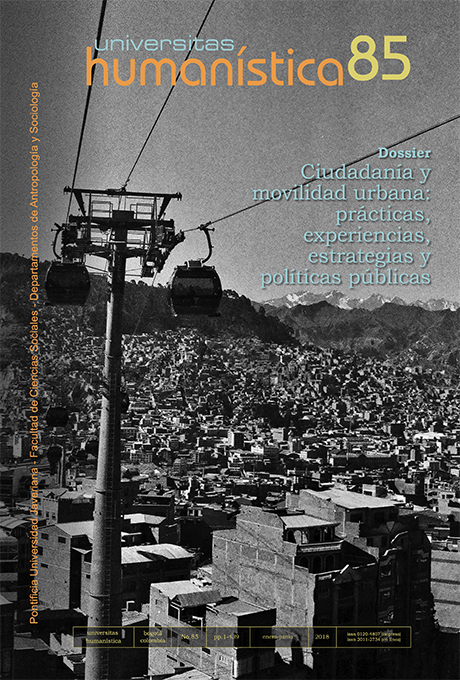Abstract
In the middle of the 20th century, Bogotá was immersed in a profound and complex process of transformation driven by two fundamental factors: unchecked population growth and the extension of urbanization well beyond the permitted urban limits. A fundamental component that accompanied this process was the transformation of the means of locomotion of the inhabitants of the city, as determined by the increase of vehicles, the transformation of the public transportation model, and the search for alternatives to the consequences produced by the two aforementioned aspects. The objective of this article is to understand what kind of social cost the Colombian capital had to take on, in terms of mobility, to become a “modern” city. The expectation is, therefore, that based on the analysis of the different aspects mentioned about mobility of the city, one can understand the difficult negotiation between urban changes and ways of inhabiting the city.

This journal provides immediate open access to its content on the principle that making research freely available to the public, encourages greater global exchange of knowledge.
The journal Universitas Humanística is registered under a Creative Commons Attribution 4.0 International Public License. Thus, this work may be reproduced, distributed, and publicly shared in digital format, as long as the names of the authors and Pontificia Universidad Javeriana are acknowledged. Others are allowed to quote, adapt, transform, auto-archive, republish, and create based on this material, for any purpose (even commercial ones), provided the authorship is duly acknowledged, a link to the original work is provided, and it is specified if changes have been made. Pontificia Universidad Javeriana does not hold the rights of published works and the authors are solely responsible for the contents of their works; they keep the moral, intellectual, privacy, and publicity rights.
Approving the intervention of the work (review, copy-editing, translation, layout) and the following outreach, are granted through an use license and not through an assignment of rights. This means the journal and Pontificia Universidad Javeriana cannot be held responsible for any ethical malpractice by the authors. As a consequence of the protection granted by the use license, the journal is not required to publish recantations or modify information already published, unless the errata stems from the editorial management process. Publishing contents in this journal does not generate royalties for contributors.


